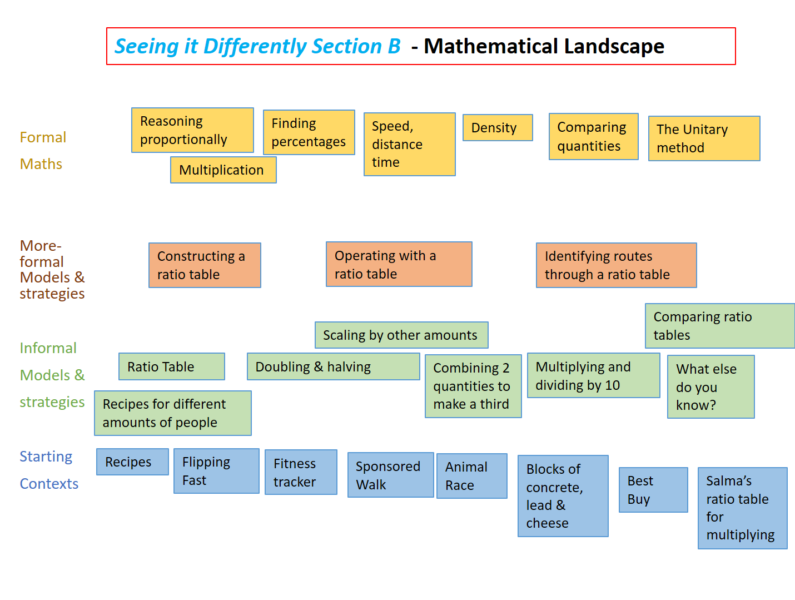How our materials are organised
Our RME teaching materials address inter-linked concepts in number, proportional reasoning, geometry, algebra, and data.
The table below shows the 10 modules split into 5 topic strands and across two ‘years’. The arrows indicate where it is advisable to teach one module within a strand before another. Other than that, within a ‘year’, it is possible to teach the topics in any order.

Although each module stands alone, each is designed to not only build ideas within a particular topic, but also to connect across different areas of mathematics. Models and strategies pop up in a number of modules. Students often recognise and build on these connections.
The materials are designed to support teaching with PowerPoint slides which are often animated so that you can pause for discussion before revealing the next step. These slides, from ‘Seeing it Differently’ focus on setting the context for work on the ratio table, beginning with a Junior Masterchef competition. Ideas for soup ingredients lead to a recipe, which students need to scale up for the competition.


Activity Sheets provide opportunities for students to work at their own pace, alone or in pairs/small groups, develop their thinking, and practice strategies. Activity Sheets are linked to the PowerPoint slides, and often connect to the contexts developed there, as in this example from the same module:

Teaching Guides provide slide-by-slide commentary on the mathematics teaching aim behind the materials with suggestions for what teachers might do, and what students might do:

All teaching guides include a ‘landscape’ diagram that sets out the contexts, models and formal mathematics developed in that module, as in this landscape for Section B of ‘Seeing it Differently’:

See here for information on how our materials fit with the National Curriculum in England.